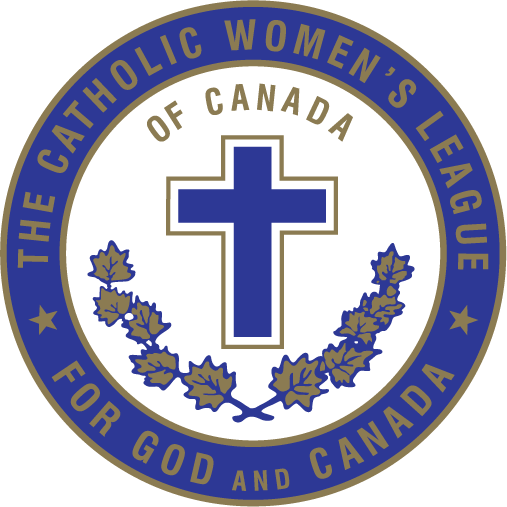Margaret Schwab
Saskatchewan Provincial Council President
One-hundred per cent of diocesan presidents submitted reports; however, online reporting across all dioceses was down from 2017. Some councils had access to computers and others did not, which made for an uncomfortable time. There was also a significant variation in skill level related to computers and performing tasks online—from none at all to very skilled. Many comments were heard regarding the level of difficulty found from those who participated. Saving to continue later occasionally kicked participants out and some hit “send” before they were able to save and print. Where councils had an opportunity to record what was good about the council, not enough room was provided to record all their thoughts, which resulted in many incomplete sentences in the final summary.
Sixty-three parish councils reported electronically and three councils forwarded manually, of a possible 131. Reports of the three diocesan presidents were compiled using those survey results.
The Canadian League magazine continued to be the most used source of information followed closely by national communiqués, diocesan communiqués, national and provincial websites, parish bulletins, Google and local newspapers. Less use was made of the Canadian Conference of Catholic Bishops and the Catholic Organization for Life and Family websites.
Members were very interested in the removal of the Canada Summer Jobs attestation, palliative care, removing medical assistance in dying from palliative care/hospice facilities, and the protection of the conscience rights of healthcare workers. Other subjects discussed or acted on to a lesser degree were the establishment of standards of testing and labeling for products deemed flushable, age verification requirements for adult pornographic websites, and the elimination of the Goods and Services Tax from child safety products. Study on requiring Gladue reports for Indigenous offenders took place in two of the three dioceses. All councils reported having discussions at meetings and several had speakers address the council on these issues. In most cases, these topics were introduced to the membership by the standing committee chairpersons.
For the most part, spiritual advisors were very supportive—approximately one-half of councils met with the spiritual advisor monthly. There were some councils that did not feel supported because the spiritual advisor was not passionate about the League or was disinterested.
A majority of councils reported using the National Manual of Policy and Procedure, the Constitution & Bylaws, Robert’s Rules of Order and the Executive Handbook to assist at meetings. To a lesser degree, Parliamentary Procedure and other resources were used.
Documents signed by the president on behalf of the council were cheques, bank documents, and letters—directed within and outside the League—as well as petitions.
The majority of presidents reported representing the council at church functions, funerals, and diocesan meetings and conventions. Presidents represented councils at World Day of Prayer, Remembrance Day services, fundraising events and dinners, community events, provincial meetings and conventions, and other conferences and workshops.
The amount of subsidization for presidents attending events varied greatly from diocese to diocese. In one diocesan council, a larger portion of presidents were fully subsidized for diocesan conventions while in the other two, few were subsidized more than 50%. For conferences and workshops, and provincial and national conventions, most subsidies offered ranged from nothing to very little. A very small portion of councils reported subsidizing 100% for national conventions click to read more.
More than one-half of councils did not have a policy and procedure manual; most felt it was unnecessary. There was some interest in having help to develop one. This was an interesting revelation as I believe one would be of value to all councils. A policy and procedure manual could have been very beneficial in assisting new executive members to become comfortable with their positions, and also to new members. One council reported making a new policy for honour guards that included women with walkers and wheelchairs.
A majority of presidents made use of the Executive Handbook and found it helpful.
Most councils provided an annual report by various methods—written, oral, e-mail, parish bulletin and newsletter. Only a few councils did not provide such a report.
All reporting councils were very busy as shown by the numbers of committees—other than standing committees—formed for special events such as, social events, bazaars, teas, funeral lunches, visitation, donations, fundraising, scholarships and bursaries. Other committees mentioned included sending cards for special events, helping with devotional masses at care homes, catering and working on policy. A few smaller councils did not form committees as they did the work together.
The most common topic spoken on behalf of by presidents was membership. This was followed to a lesser degree by palliative care, euthanasia and the conscience rights of healthcare professionals, mental health, Canada Summer Jobs program, rights of Indigenous offenders, flushable products and social events.
In all dioceses, presidents reported more councils did not use League letterhead than did, and most referenced only the total membership for their council. One comment mentioned not understanding what the question regarding referencing membership meant.
Most presidents found support in the current executive including the immediate past president, secretary and treasurer, as well as the former past president. It was of interest that very few had no support from the immediate past president.
The biggest challenges faced when taking on the role of president were not having a full slate of officers, keeping members interested and recruiting. Feeling overwhelmed, undertrained, not having the time, too much paperwork, resistance to new ideas, lack of organizational skills and lack of technology knowledge were also great concerns. Public speaking was also an issue with quite a few presidents.
For the most part, councils were happy to have a national theme to centre focus on and most felt changing it every two years was acceptable. The question regarding how many years between theme changes caused some confusion.
The provincial council requested all parish councils do a project for Catholic missions. There was a great variety of fundraisers throughout the province from “Nickels for the North” to bake sales. Unfortunately, an accurate reporting system was not in place to find how many councils participated.
Members worked hard and enjoyed the work as a sisterhood with enthusiasm, fun and fulfilment. There was great concern from all presidents that it was difficult to find women willing to take on leadership roles. I was very glad to report the following sentiments presidents included regarding their councils: “enthusiastic, get along well, pitch in when needed, senior members who are loyal and helpful, cooperative, strong, reliable, very caring, laugh together, very interested, very involved, reach out, desire to work for the Lord, faithful to CWL, committed, mission-minded, I have only to ask and all will help, spiritual benefits from sharing, fellowship and pride in my council.” One council mentioned helping repay the loan for a new church. Others noted it was members who stepped up to help with events, even when not hosted by the League. Presidents also mentioned members were very encouraging to new members and executive members.
I questioned what the provincial council could do to help make things easier for members who worked so hard for the League. We have to work on annual reports, assist councils in developing policy and procedure manuals and encourage more councils to allocate funds to subsidize presidents attending conventions. As I read the comments from presidents, I was filled with pride—members carried on a large amount of work with relatively small numbers. They were sisters who worked together with laughter, with joy and sometimes with frustration. Though getting older, members were a strong group of faith filled women who will persevere through to the next 100 years of The Catholic Women’s League of Canada.


